In the summer of 2020, people across Canada and around the world took to the streets under the rallying cry and leadership of Black Lives Matter (BLM) to protest the murder of George Floyd by four Minneapolis police officers. These demonstrations were some of the most extensive, enduring, widespread and diverse mobilizations of ordinary Canadians ever seen in this country. They fundamentally changed the conversation on anti‐Black racism in Canada.
Black Lives Matter and the struggle for racial justice in Canada
Black Canadian history, community and the pursuit of a more racially just future
By Debra Thompson
Published: September 26, 2023
Tags:
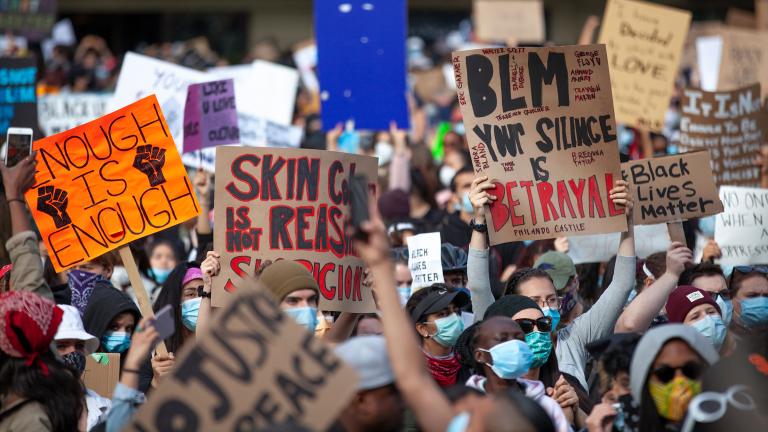
Photo: Flickr, GoToVan
Story text
The protests in Canadian towns and cities insisted that Black lives matter in Canada. This was significant precisely because many Canadians believe that there is little or no racism here. "Anti‐Blackness in Canada often goes unspoken," writes Robyn Maynard.[1] "Many Canadians are attuned to the growing discontent surrounding racial relations across the United States, but distance themselves from the realities surrounding racial disparities at home."
And yet, the Black community, anti‐racist activism and the struggle for racial justice in this country have a long history. Though the protests of June 2020 have now subsided, an important legacy of Black Lives Matter is how it illuminated the realities of anti‐Black racism in Canada, here and now.
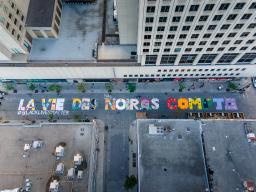
Black Lives Matter, everywhere
Black Lives Matter (#BlackLivesMatter) began as a hashtag. It became a rallying cry thanks to Opal Tometi, Patrisse Cullors and Alicia Garza after George Zimmerman – who shot and killed 17‐year‐old Trayvon Martin – was acquitted in 2013. Black Lives Matter quickly grew into a social movement, with organic, community‐based chapters springing up across the United States.
Several Canadian chapters of Black Lives Matter also emerged during this time. They worked to bring attention to police violence in Canada as well as other kinds of state surveillance of Black citizens.
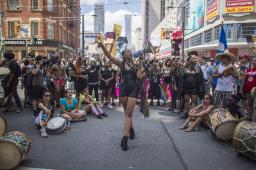
Resistance and denial
In its early years, Black Lives Matter was accused of being a brand or hashtag rather than a social movement. Critics claimed that the movement had unclear and impractical policy aims. Its decentralized, chapter‐based, proudly queer, member‐led structure was negatively compared to the hierarchical, male‐dominated, "respectable" appearance of the American civil rights movement of the 1950s and 1960s.
This comparison, however, tends to misremember how contentious and radical the civil rights movement was. Though non‐violence was a key element of Dr. Martin Luther King’s philosophy, he pursued confrontational and disruptive tactics. BLM draws from a rich historical legacy of radical Black activism, including anti‐colonial movements, the Black Power movement and the anti‐apartheid struggle.
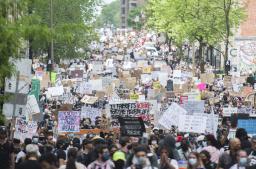
In Canada, there is additional skepticism of the movement. It is rooted in the broad social belief that Canada is a diverse, tolerant, multicultural society, especially compared to the United States. Multiculturalism is a key part of Canadian national identity. However, as a set of policies, multiculturalism has often recognized and celebrated diverse cultural identities without addressing systemic racism or racial inequality. In fact, critics argue that Canadians’ belief in the virtues of multiculturalism tends to hide the realities of Canadian racism from public consciousness.
And, of course, there were those who created the counter‐slogan “All Lives Matter.” They accused BLM of “reverse racism” and mistook Black Lives Matter to mean only Black lives matter, instead of what it actually suggests, that Black lives should matter, too. “All Lives Matter” is a prime example of colour‐blind racism, which claims that racism is a thing of the past and that skin colour isn’t associated with systems of power, privilege and exploitation. Refrains such as “All Lives Matter” are intended to shut down discussions of racism and activists’ attempts to change the status quo.
People in Canada have this idea that racism has not played a central role in our history.
The history and diversity of Black Canada
An important goal of Black Lives Matter in Canada is the celebration of Black history, Black resilience and Black presence in this country.
Slavery existed in Canada for over 200 years. It was limited in Upper Canada in 1793 and only eliminated when the British parliament’s Slavery Abolition Act took effect on 1 August 1834 – the first Emancipation Day.
Beyond those enslaved in Canada against their will, scholars generally think of Black migration to Canada in terms of three major waves. Each was diverse and distinct and helped produce the deep and varied texture of Black culture in Canada today:
- The first were the Black Loyalists, approximately 3,000 enslaved and free Blacks who fought for the British during the American Revolution.
- The second were tens of thousands of Black refugees who escaped American slavery, fleeing to Canada following the passage of the Fugitive Slave Act by the U.S. Congress in 1850.
- The third, largest and most recent wave arrived in the decades after 1967. This was when Canada replaced its overtly racist immigration policy with a points system. These immigrants spanned from Black Americans fleeing the Vietnam War draft to people from the British Commonwealth (Nigeria, Ghana, Jamaica, etc.) to a strong Francophone Black community from Haiti and the African continent.

Today, Black Canada is diverse, vibrant and an integral part of the national fabric. According to Statistics Canada, 1.5 million people in Canada reported being Black in 2021, with 41% reporting they were born in Canada.[2] In 2016, Black immigrants hailed from over 170 different places of birth. The vast majority of the Black population – 94.3% – lives in Canadian urban centres. Nearly 40% live in Toronto, representing 7.5% of Toronto’s population. More than 6% of the populations of both Ottawa‐Gatineau and Montréal are Black.[3]
Statistics Canada projects that the Black population could surpass 3 million people by 2041, making it the second largest racialized population group in the country.[4]
The fact that we have Black Lives Matter today is because Black lives haven't always mattered as much as they should.
Racial inequality
Though Black Canadian communities are diverse in terms of nationality, religion, language and more, they face similar challenges. Real, enduring racial disparities can be seen in nearly every socio‐economic indicator, including educational outcomes, employment, income and wealth, policing, incarceration, health, food security, child welfare, environment and housing.[5]
What Black people across the country hold in common is that most have experienced racism in one form or another. According to the Black Canadian National Survey, seven out of 10 Black respondents have experienced unfair treatment because of their race regularly or from time to time. More than 75%of those polled see racial discrimination in the workplace and the criminal justice system as a problem.[6]
These experiences and systemic barriers to inclusion are a major driver of contemporary Black social movements. Black Lives Matter is part of a larger constellation of Black‐led organizations leading the fight for racial justice. Another is the National Black Canadians Summit, which issued its 2022 “Halifax Declaration” that identified recognition, justice and development as “interdependent demands that we proclaim and will carry forward and defend with unwavering determination, for all oppressed peoples.”[7]
Community care and demands for change
In the face of criticism and entrenched racial inequality, the core commitments of the BLM movement have not wavered. Black Lives Matter is shaped by radical Black feminism that emphasizes mutual care. It acknowledges that racism causes psychological trauma, sees joy as an important political resource to be shared among community members, and believes in police and prison abolition.[8]
Activists in Canadian cities have challenged police practices of carding and street checks. They have called attention to the disproportionate use of force against Black and Indigenous people. They have raised awareness of the recent police‐involved killings of Abdirahman Abdi, Bony Jean‐Pierre, Andrew Loku, Regis Korchinski‐Paquet and other Black people in Canadian urban centres.
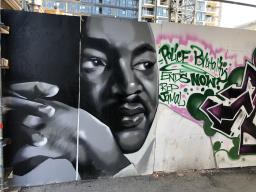
More broadly, Black Lives Matter activists highlight the violence faced by marginalized communities such as Indigenous people, sex workers, homeless populations and the trans community. They also lobbied to stop deportations of Black migrants, called out anti‐Black racism in schools and allied with Indigenous peoples’ Land Back movement.
Black Lives Matter seeks to change the circumstances for Black people in Canada – including undocumented Black people, homeless Black people, queer and trans Black people, disabled Black people and others on the margins of the margins. The struggle is, and has always been, inclusive and intersectional, intent on working in solidarity with other communities that desire a better, more just world.
Disability activism, trans justice and trans liberation, and Black liberation struggles are all intimately connected because they’re all trying to achieve a similar goal, which is the self-determination of all people.
Progress and potential
It’s clear that over the past decade, the activism of social justice‐oriented groups, organizations and communities has changed the conversation on issues such as police violence, anti‐Black racism and persistent racial inequality.
- An internal study conducted by the Toronto Police Service revealed the disproportionate use of force against Black and Indigenous people in Toronto.
- In 2022, New Brunswick’s Systemic Racism Commissioner issued its report with 86 recommendations for addressing systemic racism in health care, education and other policy sectors.
- In Quebec, a coroner’s report into the death of Joyce Echaquan, an Atikamekw woman who recorded the racist slurs of care workers in a Quebec hospital, condemned systemic racism in health care.
- In British Columbia, the Anti‐Racism Data Act came into effect in June 2022, allowing the Province to collect and use racially disaggregated data in order to identify and eliminate systemic racism.
- The Department of Justice launched Canada’s Black Justice Strategy in order to address anti‐Black racism within the criminal justice system and ensure everyone has access to equal treatment before and under the law.
In short, governments across the country are beginning to recognize and design strategies to combat systemic racism. White supremacy, however, is a formidable opponent and, to paraphrase Audre Lorde, we cannot rely on the master’s tools to dismantle the master’s house. Progress requires concerted, purposeful, justice‐oriented action from governments and citizens alike.
While support for Black Lives Matter in the United States plummeted from 68% in June 2020 to 51% in April 2023[9], support for Black Lives Matter in Canada remains high, ranging from 87% of Black women and 78% of Black men to 60% of white men and 68% of white women.[10] Whether and how well this support translates into concrete action, however, remains to be seen.
At the core of activism is an enduring hope for a more racially just world. In the words of the Halifax Declaration: "We want to believe in dreams yet to be fulfilled, made possible by putting all our energies together. The journey is a long one, with trials and obstacles, but the movement we launched is unstoppable. We will not back down."
Our collective protests have created a chasm, one we can fill with Black art, new ideas, and our full selves.
Ask yourself:
What has changed since the Black Lives Matter protests of June 2020?
What, if anything, did I learn about Black Canadian history in school?
How diverse is my friend group, family, school, or local community?
Black History and Human Rights
Discover Black stories, voices, struggles and triumphs. Learn about personal and collective acts of resistance and the ongoing fight for equality. Reflect on how we can work to end colonial and racist systems of repression.
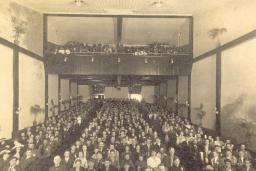
References
- Robyn Maynard. Policing Black Lives: State Violence in Canada from Slavery to the Present. Halifax: Fernwood Publishing, 2018, p. 3. Back to citation 1
- Statistics Canada. “The Canadian census: A rich portrait of the country’s religious and ethnocultural diversity.” The Daily, October 26, 2021. https://www150.statcan.gc.ca/n1/en/daily-quotidien/221026/dq221026b-eng.pdf?st=93XYOWv5 Back to citation 2
- Statistics Canada. “Diversity of the Black population in Canada: An overview.” Ottawa: Statistics Canada, 2019. https://www150.statcan.gc.ca/n1/en/pub/89–657‑x/89–657-x2019002-eng.pdf?st=X0wtMW8O Back to citation 3
- Statistics Canada. “Canada in 2041: A larger, more diverse population with greater differences between regions.” The Daily, September 8, 2022. https://www150.statcan.gc.ca/n1/en/daily-quotidien/220908/dq220908a-eng.pdf?st=zWZi1WjB Back to citation 4
- Debra Thompson. The Long Road Home: On Blackness and Belonging. Toronto: Scribner Canada, 2022. Back to citation 5
- Lorne Foster, Stella Park, Hugh McCague, Marcelle‐Anne Fletcher, and Jackie Sikdar, Black Canadian National Survey: Final Report 2023. York University: Institute for Social Research, 2023. https://www.yorku.ca/news/wp-content/uploads/sites/242/2023/06/BCNS-Report_2023-FINAL.pdf Back to citation 6
- National Black Canadians Summit. Halifax Declaration for the Eradication of Racial Discrimination. Michaëlle Jean Foundation, 2023, p. 4. https://www.blackcanadiansummit.ca/_files/ugd/3d2952_9e01c19d71134a36a9cc7b0de33955b5.pdf?index=true Back to citation 7
- Deva Woodly. Reckoning: Black Lives Matter and the Democratic Necessity of Social Movements. Oxford University Press, 2022. Back to citation 8
- Juliana Menasce Horowitz, Kiley Hurst and Dana Braga. “Support for Black Lives Matter Has Dropped Considerably From Its Peak in 2020.” Pew Research Center, June 14, 2023. https://www.pewresearch.org/social-trends/2023/06/14/support-for-the-black-lives-matter-movement-has-dropped-considerably-from-its-peak-in-2020/ Back to citation 9
- Black Canadian National Survey: Final Report 2023. Back to citation 10
Suggested citation
Suggested citation : Debra Thompson. “Black Lives Matter and the struggle for racial justice in Canada.” Canadian Museum for Human Rights. Published September 26, 2023. https://humanrights.ca/story/black-lives-matter-and-struggle-racial-justice-canada